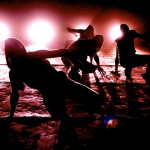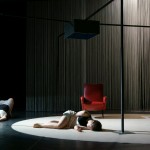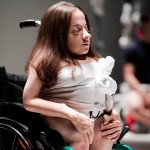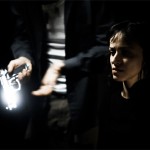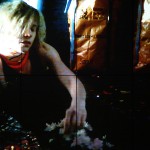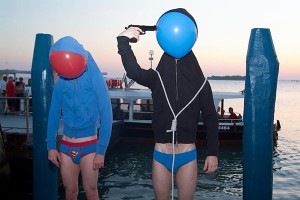#3.1.2 RELEVANT EXAMPLES
It being understood that it is only a selection of the actual active groups and artists currently active in Italy, the following list is roughly divided in sets of aesthetics and styles.

VISUAL THEATRE
Romeo Castellucci has been at the top of the list since the nineties, after the company Socìetas Raffaello Sanzio parted in different parallel projects, Castellucci is still the most important Italian theatre artist and director alive. He is also highly active as an opera director. Somehow embodying Raffaello Sanzio’s heritage, collectives such as gruppo nanou or Città di Ebla have been digging their own special path towards an impressive new wave of visual theatre that is breaking out of the national boundaries. Two important groups are based in Rome: Santasangre and Muta Imago who use the most up-to-date technologies to create a real different environment for the performance.
DANCE AND PERFORMANCE
After a ten-year activity as a performer in the Parma based company Lenz Rifrazioni, Alessandro Sciarroni launched a solo career in 2003. His work runs halfway between dance and performance art; Sciarroni is currently among the best-known and appreciated Italian artists in Europe and abroad. The work of CollettivO CineticO, directed by Francesca Pennini, goes partly in the same direction. It experiments extensively with the interaction between the performers and the audience. Delivering a strongly visual work, mixed with a radical performative attitude that owes much to Jan Fabre’s aesthetics, Ricci/Forte – a duo of playwrights/directors from Rome which emerged in mid 2000’s – is undoubtedly one of the most appreciated groups in Italy and abroad. The coasts of dance-theatre are manned by groups such as Balletto Civile which has been leading a very intense residential work between Parma and La Spezia since 2003; the historical Raffaella Giordano and Giorgio Rossi’s Sosta Palmizi; and the group Aldes that controls the work of artists such as Roberto Castello and Ambra Senatore in Tuscany, though Virgilio Sieni and his company Sienidanza are still very active in Tuscany, all over Italy and abroad. Sieni has also been appointed as Director of the Venice Biennale (Dance Section) until 2016. The choreographer Michele Di Stefano, leader of the dance company MK, has received the Silver Lion in 2014. Between dance and performance we can also find Kinkaleri, a name that has been heard since the nineties.
PLAYWRIGHTS
Spiro Scimone and Francesco Sframeli formed one of the most acclaimed companies abroad. Scimone’s plays are even included in the repertoire of the Comédie Française. Since his first writings, Fausto Paravidino has made his mark as a very interesting playwright: his “British style” plays have been translated and staged on a number of venues in Europe. Stefano Massini is also very popular in France and Canada. While Michele Santeramo is now presenting his fifteenth text, a new generation of playwrights is currently emerging, like Davide Carnevali or Carlotta Corradi.
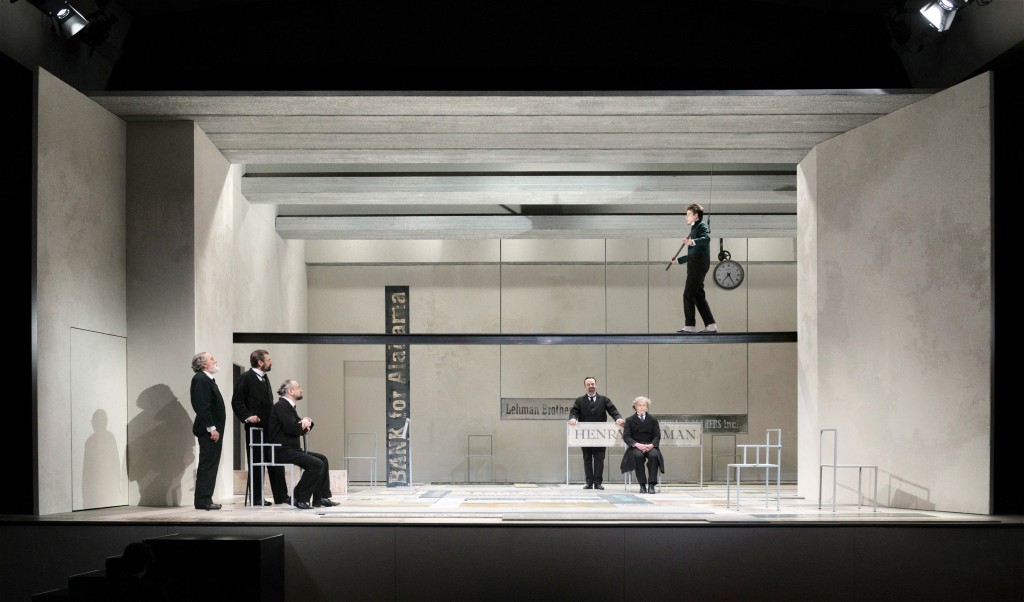
ENSEMBLE COMPANIES
Not many groups can in fact work as an ensemble, and the majority of them are able to keep on thanks to the fact that they run a venue. That’s the case of Teatro delle Albe, a historic company from Ravenna (led by Marco Martinelli and Ermanna Montanari) that has been working extensively on community projects in Europe and Africa. Teatro dell’Elfo and Teatri Uniti are two of the long-lasting collectives, one from Milan and the other from Naples. The 40-year-old Elfo runs a major private venue in central Milan, the Teatro Elfo Puccini, with three stages and thousands of spectators each year; Teatri Uniti was founded in 1987 from the fusion of three famous companies and still pitches some relevant productions. In 20 years of activity, Accademia degli Artefatti, directed by Fabrizio Arcuri, has been radically changing its language, crossing the fields of visual theatre and moving to a strictly text-acting based work (from contemporary British playwrights to Brecht and Fassbinder), towards a new definition of political theatre and co-producing performances with Vienna and Berlin. Motus (Enrico Casagrande and Daniela Nicolò), and Teatro Valdoca (Cesare Ronconi and Mariangela Gualtieri) are still on stage after more than thirty years. While younger but not weaker are groups such as Teatro Sotterraneo from Tuscany and Fibre Parallele from Puglia, one dedicated to grotesque post-dramatic theatre, the other committed to the most pure and nude acting art. A separate discourse should be dedicated to introduce Armando Punzo‘s work with the Compagnia della Fortezza. This guy has consecrated 25 years to working with the prisoners of the state jail in Volterra, Tuscany. Each year the city hosts a festival, Volterrateatro, during which—among other events—the new show of the Fortezza is presented: the audience is invited to enter the prison, where the show is performed.
POPULAR DIRECTORS AND SOLO ARTISTS
Together with Marco Baliani and Marco Paolini, Ascanio Celestini is the most famous example of teatro di narrazione (narrative theatre), a style that emerged in late nineties. Since his breakthrough in 2000, Celestini has become very popular also thanks to his TV participations and novels. In late March 2015 Italy lost one of his major personalities, the director Luca Ronconi. His 50-year career revolutionized the auteur theatre in Italy after Giorgio Strehler, both in theatre and opera. A well-known Italian director is Giorgio Barberio Corsetti, still active and regularly invited to major venues in Europe to author big hits. Other relevant names are Massimo Castri, Antonio Calenda, Mario Martone, Valter Malosti, Gabriele Lavia and Carlo Cecchi. Massimiliano Civica can be considered as a formalist of Brook-like class, working very deeply with the performers to extract the very essence of acting and text analysis. Antonio Latella is very famous all over Europe (especially in Germany, Austria and Russia) as one of the most courageous experimenters in the field, hitting the stage with more than two productions per year, with his “semi-ensemble” company, Compagnia Stabile/Mobile. Together with Latella (and, of course, with Castellucci) and Ricci/Forte, Emma Dante and Pippo Delbono can be pointed out as the Italian artists with the widest distribution abroad. Their relevance undisputed, Italy has many more examples..
Back to article #3 Aesthetics
Published on 12 May 2015
